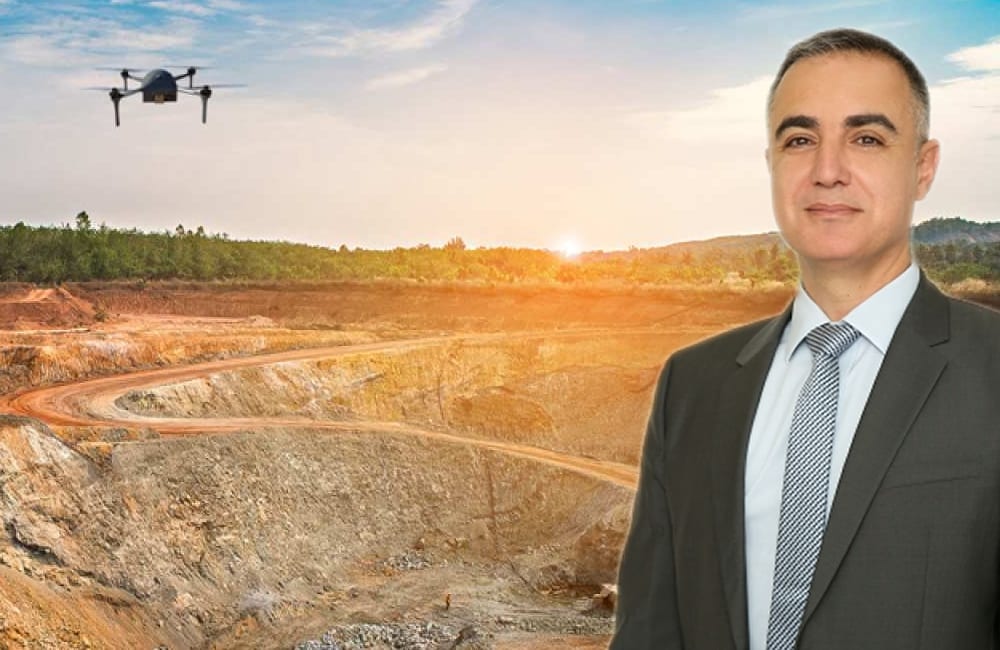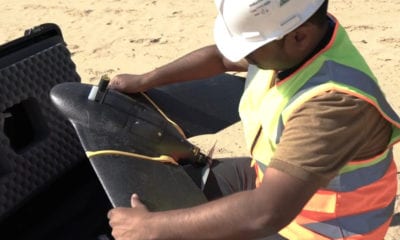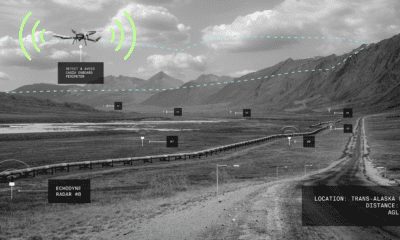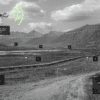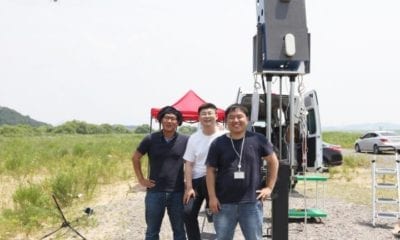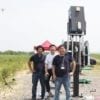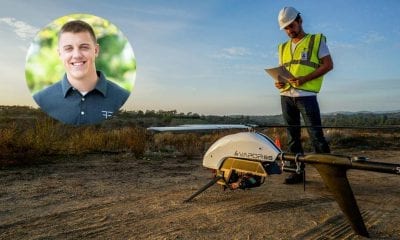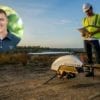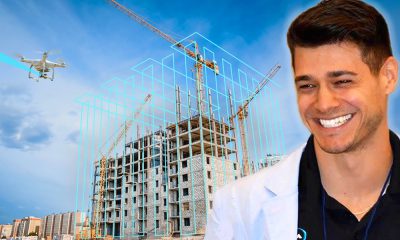Back to Base (B2B)
Making Drones Smarter – Interview with Mobilicom CEO, Oren Elkayam
Mobilicom Ltd., headquartered in Shoham, Israel, is a high-tech company that designs, develops and delivers communication solutions for mission critical and remote mobile private networks that can operate without the need for existing infrastructure. Mobilicom products and technologies are based on an innovative approach that merges 4G and Mobile MESH technologies. Mobilicom offers a large solution portfolio that has been deployed worldwide. Mobilicom has two business entities.
The first is Mobilicom’s core business entity, with solutions that cater to mission – critical communication in the Government and Enterprise sector with applications in unmanned platforms, disaster relief and public safety, and offshore and remote areas. The second is its SkyHopper business entity, an end-to-end equipment and solution provider, which targets the Commercial Drone & Robotics sector. We spoke with Oren Elkayam, CEO and Co-Founder of Mobilicom Ltd. about SkyHopper and the drone industry in general.
Hi Oren, thanks for taking the time to talk to us, what is SkyHopper by Mobilicom? What solutions does SkyHopper offer, and what is the technology behind them?
Mobilicom’s SkyHopper entity is a global provider of holistic end-to-end hardware and software solutions for drones and robotics around the world, which targets the commercial and the industrial sectors. SkyHopper brings all the key components that make “just a drone” into a “smart drone”, integrating all the important pieces that are valuable for the drone’s creation. If we will look at an example from another industry: when you dismantle your car, you can see that it is comprised of thousands and thousands of pieces, but only a small number of them – the engine, the gear and the electronic system – are the heart of the car. In a similar way, for drones and robotics there are 5 or 6 pieces that set the core of these platforms, and these are the smart and expensive pieces. This is what SkyHopper focuses on: bringing the core components for drones and robotics in the commercial and industrial sectors.
For example, our portfolio of end-to-end offering started with SkyHopper PRO, a communication data link for control, telemetry and video and data transmission to and from the drone or the robot. We then added another piece to the puzzle, the video processing and analytics, through our SkyHopper PRO V, which enables the transceiving of full HD videos to the user in real-time, and enables to save them on board for later processing of the video materials.
The third segment that we are addressing is the control terminal with our SkyHopper ControlAir: this is the ground element that controls and operates the drone’s mission. It includes mission-planning software that enables the planning and operation of the robot or drone’s mission and it also receives the video and data from the drone.

Another important element is the viewing terminal, which is especially important for the security and the federal industry, where there is a constant need to share the information in real-time with other users. For these purposes we offer the SkyHopper VU, a receiving terminal for real-time video and data, with the ability for multiple VUs to simultaneously receive video and data from the same drone.
In addition to the hardware, we offer software such as that for drone security, encryption and cyber protection. The hardware and software, in addition to our integration and support services, are what makes SkyHopper an holistic solution provider for commercial drones and robotics.
SkyHopper’s technologies are fully owned and developed by Mobilicom, and are patented and proven in all of the verticals in which Mobilicom is active, such as the government and the enterprise sectors. Looking forward, the next aspects SkyHopper will be tackling are 5G and cellular networks, as well as Artificial Intelligence and cyber security solutions which are critical for the success and the scalability of drones.
As drones are becoming more widespread among commercial applications, what do you see as the role of “security” within this realm?
Just a few years ago, people didn’t understand the challenges and threats in drone security, cyber attacks, and even jamming. People thought that using consumer-level communications or technologies, such as WIFI, were good enough. However, recent operations of drones in the military and HLS sectors as well as in the commercial and industrial sectors have shown that security is a critical factor for drones and robotics operations.
This is especially relevant for the commercial and industrial sectors, as those sectors are very vulnerable, applications will often be conducted in public spaces over the heads of many, and operators cannot allow their drones to be attacked, nor the information these platforms hold be jeopardized. SkyHopper, and Mobilicom as a whole, has taken this security challenge very seriously. We have educated the market over the last years and brought a set of technologies that, incorporated together, are able to solve the security problem for these industries. More importantly, once the security problem is solved, the regulators and governments will slowly unleash the use of drones in the commercial and industrial space, safely knowing that it will no longer be a threat to the public.
Now, it’s important to note that when we say security, we mean a range of different things. The first thing we have already incorporated is High-End encryption. Here, the question is who has verified, tested and validated your encryption. The solution that SkyHopper incorporates has a high-end security encryption level that was designed for, validated, and proven by organizations such as the Israeli MOD and other European security and governmental organizations. Moreover, when we say security, we also mean what kind of protection do you have in order to identify that your solution is not under a threat or that it can’t easily be jammed by any small, cheap device that can be purchased online.
Third, but also very important is the cyber element. Sometimes you, or other unwanted parties, can listen to a drone, meaning to the ability to receive the information the drone holds in real time, in parallel to the drone operator. For example, recently Checkpoint announced that they found a breach of security within the DJI drone, which is the number-one player in the industry. They have shown that the information from the drone could be accessed by others. On this basis, we propose a new innovative set of solutions that were granted a very large budget by the Israeli Innovation Authority and the Israeli MOD. They see our solution as THE SOLUTION for drone and robotic cyber protection. We would like to ensure that it would be very difficult, if not nearly impossible, to penetrate, listen and manipulate the information from the drone. Our new cyber security solution, based on advanced AI algorithms, will be at the forefront of technology for the commercial and industrial industries.
Where do you see the commercial drone industry in 5 years from now?
Any revolution that we have seen in recent years has been hard to anticipate. It’s always hard to say how big a technology will get and what implications it would have on our daily lives. One of the best examples I like to mention is in 1997, when mobile technology and cellular solutions were just beginning. At that time, the biggest and most professional organizations that existed in the market back then predicted that by the year of 2000 there would be less than one million users of mobile phones worldwide. As we all know, the real number by 2000 was 120,000,000 users, a market size more than 100 times bigger than predicted.
I think that drones, and robotics in general, will see the same sort of development, that 10 years from now, we will all be amazed by how we did not anticipate the scale of this revolution, as drones and robotics will become a part of our daily lives in many areas. The big revolution will start when the commercial and industrial sectors will benefit from drones and robotics in streamlining their operations and reducing their costs. We believe that the commercial-industrial drones and robotics that SkyHopper is targeting will be an industry that will influence every aspect of our lives. From delivery of items to higher security and patrol missions – most will be performed by robots and drones instead of people. The impact will be enormous – much like the mobile phone and internet revolution.
In order to foster the growth of this industry, what are the key elements that are required to ensure this scalability?
There are five elements that we see as the most important trends that will enable this growth. The first and most important one is regulation. Regulation can stop, hold or delay the process, but can also accelerate it dramatically. Until recent years, the growth of this industry was under the burden of regulation, that didn’t allow deployment of drones and robotics in the commercial and industrial sectors on a larger scale. There were small deployments, but mainly in restricted small areas, not at all on a large scale. Regulation is changing now, and beginning to loosen. Many countries such as the US, UK, Japan and others are slowly opening their skies for drone testing as well as for certain applications to be executed through drone operation such as delivery, infrastructure inspections and more. We anticipate that 2019 will be the year when a bigger change in regulation for this industry will occur.
The second element is security and protection, which we have already discussed. No one will allow mass use of drones and robotics in the commercial sector if they are not safe, cannot be fully trusted or with the risk they might be hijacked. Also, in order to allow the scalability of this revolution, platforms will have to be fully autonomous. We are taking the pilot out of the loop, thereby needing the assurance that the platform be secure and safe.
The third and fourth elements are Fleet-Management & Swarm Operations. Today, most drones are controlled by an operator. In the near future we will see one operator that controls a fleet of drones, and sets of drones that are operating together as one. For example, if you have a large area that you have to scan, it will take hours to do so by one drone. However, by doing it with 3 or 4 drones simultaneously you can cover the area in less than an hour. Furthermore, the information that you will collect will be even more accurate, because the scanning process will be shorter – and that will allow us to avoid mistakes which can result from changes that occur in the scanned area over time. Fleet management will also allow for efficient delivery services from business to customers: for example, if you had to operate 5 to 10 drones for your pizza delivery service in order to deliver 50 pizzas in one hour, you couldn’t do so by operating one at a time with only one drone operator. However, with one operator simultaneously operating a fleet of drones, the task of delivery becomes easier and faster.
The last key element is cloud-based operations. Today, most drone operations are conducted line-of-sight or very close to line-of-sight. However, if we would like to use drones and robotics in order to perform missions further away, we have to do so over cloud computing. For example, when NASA sent a robot to Mars and wanted to operate it there, they understood that it would have to possess cognitive and decision-making capabilities over the cloud in order for the robot to operate by itself.
SkyHopper was designed with the objective of addressing these 5 key technology elements, and in turn, to enable the industry to scale up.
Can you discuss with us any recent successful case studies?
As SkyHopper has reached a point where there are more than 50 drone and robotics companies in 14 different countries worldwide that are using our products and building platforms around our solutions, we have been fortunate to amass several case studies.
One example that I can share is that a few months ago, Airbus Innovation decided that SkyHopper by Mobilicom will be the solution of choice for their drones for commercial and federal organizations. The SkyHopper solution was embedded in their commercial drones and was demonstrated at exhibitions. We intend to maintain and increase our cooperation with Airbus, and we are honored that the Aerospace giant has decided to accelerate the process of using the end-to-end solution within their systems.
Another example I can share is from the robotics industry. A large robotics company has decided to integrate the SkyHopper solution into its platforms used for HLS operations. We currently offer a high-quality solution that is certified in Japan, and this company has integrated our solution into their existing robotics and offered it to the Japanese market. A third example is the unique cooperation we have with a US-based robotics company, which designs unique snake-like robotics that operate in mines and HLS missions.
Finally, there are several companies worldwide that use Mobilicom and SkyHopper solutions for their autonomous drone platforms.
About Oren Elkayam
 Oren Elkayam, CEO and Co-Founder of Mobilicom Ltd., has made it his mission to ensure UAV communication is effective and best serves the needs of given UAV applications. He has worked both as CEO and VP Business Development for leading companies in the wireless communications arena (CEO of Sortech Ltd. and VP Business Development at Runcom Ltd.), Chairman, Managing Director, and Co-Founder. Oren brings vast experience in strategic business, having initiated & negotiated contracts with leading corporations such as Mitsubishi Elec., Alcatel-Lucent, Nortel, ZyXEL, STMicroelectronics, Motorola, etc. He has led investment rounds with US based VC’s as well as managed Sortech’s start-up from prototype to commercial sale to becoming a top tier vendor. He has been a voting member on both the Institute of Electrical and Electronic Engineers (IEEE) and WiMAX international committees, served as an officer in the Israeli Air Force in an elite research and development unit and worked for the Israeli equivalent of NASA. Mr. Elkayam holds a B.Sc. in Electrical Engineering and an MBA (magna cum laude), both from Ben-Gurion University in Israel. Oren is Married to Inbar and has three adorable children, he lives in Hod-Hasharon and his favorite hobby is tracking around the world.
Oren Elkayam, CEO and Co-Founder of Mobilicom Ltd., has made it his mission to ensure UAV communication is effective and best serves the needs of given UAV applications. He has worked both as CEO and VP Business Development for leading companies in the wireless communications arena (CEO of Sortech Ltd. and VP Business Development at Runcom Ltd.), Chairman, Managing Director, and Co-Founder. Oren brings vast experience in strategic business, having initiated & negotiated contracts with leading corporations such as Mitsubishi Elec., Alcatel-Lucent, Nortel, ZyXEL, STMicroelectronics, Motorola, etc. He has led investment rounds with US based VC’s as well as managed Sortech’s start-up from prototype to commercial sale to becoming a top tier vendor. He has been a voting member on both the Institute of Electrical and Electronic Engineers (IEEE) and WiMAX international committees, served as an officer in the Israeli Air Force in an elite research and development unit and worked for the Israeli equivalent of NASA. Mr. Elkayam holds a B.Sc. in Electrical Engineering and an MBA (magna cum laude), both from Ben-Gurion University in Israel. Oren is Married to Inbar and has three adorable children, he lives in Hod-Hasharon and his favorite hobby is tracking around the world.
For more information visit www.skyhopper.biz and www.mobilicom.com

